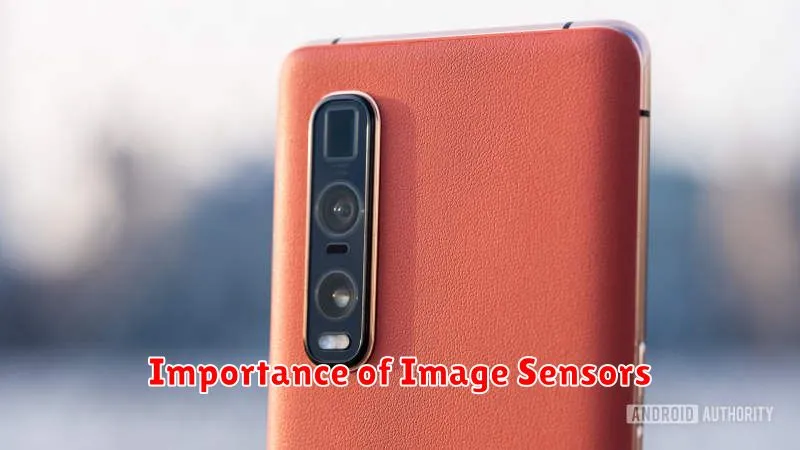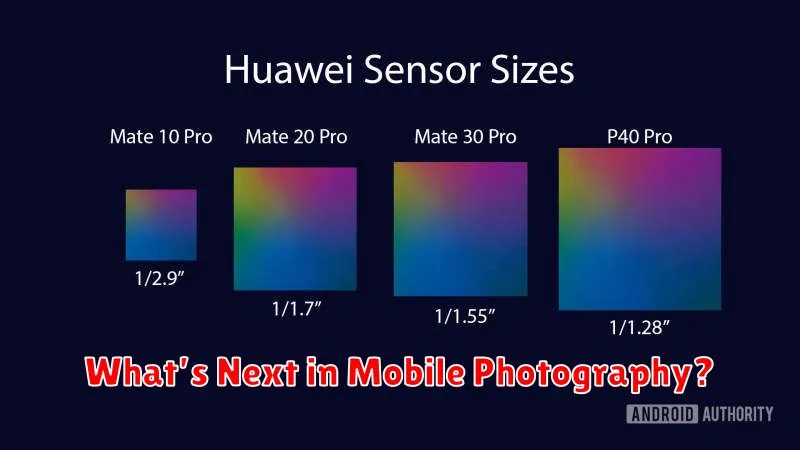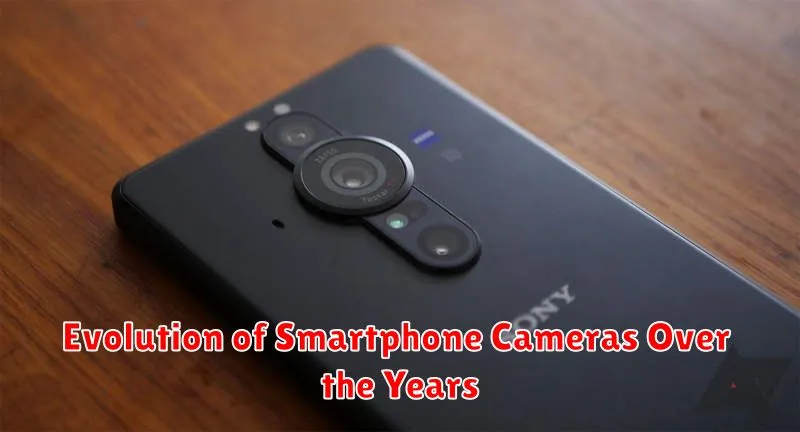The evolution of smartphone cameras is a remarkable tale of rapid technological advancement. From humble beginnings as blurry, low-resolution afterthoughts, they have transformed into powerful, sophisticated imaging tools rivaling, and in some cases surpassing, dedicated digital cameras. This evolution has fundamentally changed how we capture and share our world, influencing everything from social media to professional photography and videography. This article will delve into the key milestones that have shaped the smartphone camera’s journey, exploring the innovations in sensor technology, lens design, and software processing that have driven this dramatic transformation.
Join us as we trace the evolution of smartphone cameras from their nascent stages to the cutting-edge technology available today. We will examine the pivotal shifts that propelled these pocket-sized devices from basic image capturing tools to the sophisticated instruments they are now, capable of producing stunning photographs and high-quality videos. We will explore how advancements in megapixels, aperture, image stabilization, and computational photography have shaped the smartphone camera’s capabilities, empowering users with unprecedented creative control. Understanding this evolution provides valuable context for appreciating the powerful technology we hold in our hands and anticipating future developments in mobile photography.
The First Camera Phone
The distinction of the first commercially available camera phone is often attributed to the J-SH04, released by Sharp and J-Phone in Japan in November 2000. This groundbreaking device featured a 0.11-megapixel CMOS sensor integrated directly into the handset, allowing users to capture and share images digitally, a novel concept at the time.
While the J-SH04 held the title for commercial availability, other prototypes and limited releases predated it. Samsung, for example, developed a prototype camera phone in 1999, showcasing the nascent development of this technology. However, the J-SH04 marked the moment when camera phones transitioned from concept to consumer reality, paving the way for the ubiquitous smartphone cameras we see today.
Megapixels Then and Now
In the early days of smartphone cameras, megapixel (MP) count was a key marketing feature. A higher MP count was often touted as directly translating to better image quality. Early smartphones typically featured cameras between 1.3MP and 5MP.
Today, while megapixels still contribute to image resolution, the relationship is less straightforward. Advancements in sensor technology, image processing, and lens quality play a much more significant role. Modern smartphones often boast cameras exceeding 12MP, with some even reaching 108MP or higher. However, the focus has shifted from simply increasing megapixels to optimizing the overall camera system for superior image quality in various conditions.
Importance of Image Sensors

Image sensors are the foundation of any digital camera, including those found in smartphones. They are responsible for capturing the light that enters the lens and converting it into an electrical signal, which is then processed to create the final image. The quality and capabilities of the image sensor directly impact several key aspects of image quality.
Resolution is determined by the number of pixels on the sensor. A higher pixel count generally allows for larger prints and more detail. Sensitivity, often referred to as ISO performance, dictates how well the sensor performs in low-light conditions. A more sensitive sensor can capture usable images in dimmer environments with less noise.
Dynamic range refers to the sensor’s ability to capture both bright highlights and dark shadows in a single scene. A wider dynamic range preserves more detail in high-contrast situations. Lastly, the physical size of the sensor impacts image quality. Larger sensors typically gather more light, leading to better low-light performance and shallower depth of field, allowing for greater creative control over focus.
Night Mode and Low Light Imaging
A significant advancement in smartphone camera technology is the introduction and refinement of night mode and low light imaging capabilities. Previously, capturing usable photos in low light conditions was a major challenge for smartphones, often resulting in grainy and unclear images.
Night mode leverages computational photography techniques, including image stacking and long exposures, to gather more light. Sophisticated algorithms then process this information to produce brighter, clearer images with reduced noise and improved detail in dark scenes.
This evolution has dramatically improved the versatility of smartphone cameras, allowing users to capture high-quality images in a wider range of lighting conditions.
Ultra-Wide and Telephoto Lenses
The inclusion of ultra-wide and telephoto lenses marked a significant step in smartphone camera evolution. Ultra-wide lenses, with their wider field of view, allow for capturing more expansive scenes, ideal for landscapes and architecture. They create a distinctive perspective, adding depth and drama to images.
Telephoto lenses offer optical zoom capabilities, bringing distant subjects closer without sacrificing image quality as significantly as digital zoom. This advancement enabled users to capture detailed shots of wildlife, sporting events, and other subjects that were previously difficult to photograph with a smartphone.
Optical Zoom vs Digital Zoom
Understanding the difference between optical and digital zoom is crucial when evaluating smartphone camera capabilities. Optical zoom utilizes the lens’ physical elements to magnify the subject, preserving image quality. It’s akin to using a telephoto lens on a traditional camera.
Digital zoom, conversely, crops the image and then enlarges it electronically. This process effectively reduces the number of pixels used, resulting in a loss of detail and a potentially pixelated appearance. While digital zoom offers greater magnification ranges, it often comes at the expense of image quality.
AI Enhancements and Scene Recognition
A pivotal advancement in smartphone camera technology is the integration of artificial intelligence (AI). AI algorithms analyze scenes in real-time, identifying elements like people, landscapes, and objects.
This recognition allows the camera to automatically adjust settings such as exposure, white balance, and saturation to optimize the image for the specific scene being captured. This results in significantly improved image quality, especially in challenging lighting conditions.
Furthermore, AI powers features like scene detection. The camera can distinguish between various scenes, such as portraits, sunsets, or food, and apply specific optimizations to enhance the final image. This automated process makes it easier for users to capture professional-looking photos without needing advanced photography knowledge.
Video Capabilities and 4K Recording
Early smartphone cameras offered limited video recording capabilities, often at low resolutions and frame rates. However, advancements in image sensors and processing power led to a rapid evolution in video quality.
The introduction of high-definition (HD) video recording marked a significant milestone. 720p and later 1080p (Full HD) became standard features, enabling users to capture clearer and more detailed videos.
A major leap forward was the arrival of 4K Ultra HD video recording. This offered four times the resolution of 1080p, resulting in incredibly sharp and detailed footage. 4K recording became increasingly prevalent in flagship smartphones and gradually trickled down to more affordable models.
Alongside resolution improvements, features like optical image stabilization (OIS) and electronic image stabilization (EIS) helped to produce smoother and more stable videos. Higher frame rates, such as 60fps and 120fps, also became available, allowing for slow-motion capture and smoother action sequences.
Front Camera Trends for Selfies
The rise of the “selfie” has significantly impacted front camera development. Megapixel counts have steadily increased, enabling higher resolution self-portraits. Beyond resolution, features like autofocus, once exclusive to rear cameras, are now commonplace on the front, ensuring sharp images.
Software enhancements play a crucial role. “Beauty mode” algorithms smooth skin, adjust lighting, and enhance features. Furthermore, the integration of portrait mode allows for bokeh effects, blurring the background and creating a professional look. Wide-angle lenses have also become popular, accommodating group selfies and capturing more of the background scene.
What’s Next in Mobile Photography?

The future of mobile photography promises further advancements in several key areas. We can expect to see even more sophisticated computational photography techniques, pushing the boundaries of what’s possible with software-driven image enhancement. This includes improvements in areas like night mode, HDR, and zoom capabilities.
Hardware innovations will also play a crucial role. Expect continued development in sensor technology, with larger sensors becoming more prevalent in mobile devices. Furthermore, advancements in lens technology, such as improved optical zoom and variable aperture, are likely to enhance image quality and offer greater creative control.
Artificial intelligence (AI) will continue to be a driving force, enabling features like intelligent scene recognition, automatic image optimization, and personalized photography experiences. The integration of AI could also lead to advancements in areas like subject tracking and augmented reality applications within mobile photography.

